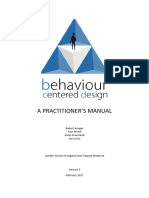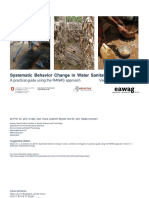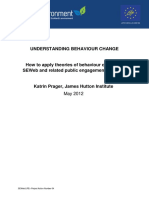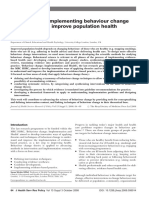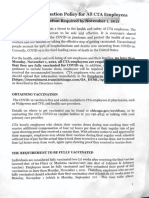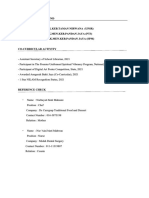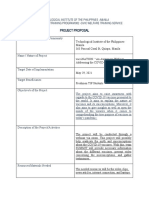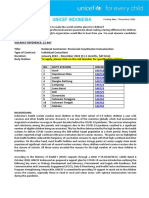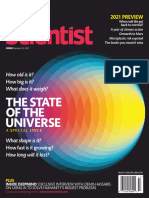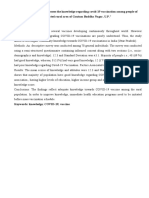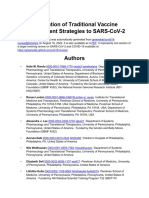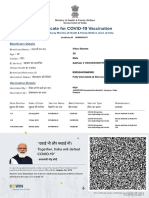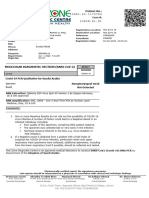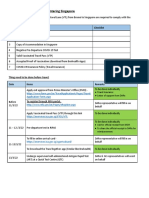2
INTRODUCTION
Change can be hard. We all know that. Keeping fit, eating well, managing our finances and doing the
right thing by others and the planet. We try our best as individuals, but it often falls to government and
other institutions to persuade us to change our ways, typically by providing information, developing
regulations or creating incentives.
The problem is, telling people what to do or think doesn’t always work.
To give our behaviour change ambitions the best chance of success, we need to understand the
things that really matter to people and use insights from the behavioural sciences to influence
behaviour in a way that leads to more economic prosperity, better health, social inclusion and
environmental sustainability.
It was these sentiments that led to a small group of researchers at Monash University (Australia)
coming together with a similar small group of practitioners in government and industry to form a
research unit that would eventually be known as BehaviourWorks Australia (BWA)1.
In the following years, we collaborated on hundreds of behaviour change projects, embracing new
methods and thinking, expanding our skillset with new staff and partners, and learning a lot from leading
behaviour change researchers and practitioners, as well as from our own success stories and missteps
along the way.
These new skills and learnings manifested in a behaviour change research toolkit in 2016, which we
simply called the BWA Method. It is not prescriptive, nor comprehensive, but rather a prioritised list of
research tools that if employed, will increase the chances that your behaviour change efforts will be
effective. It symbolises our ambition to put as many behaviour change research and decision tools as
possible in the hands of practitioners.
As a university-based behaviour change unit, we fundamentally believe that research and the use of
decision-making tools are vital to understanding problems and making informed choices about
behaviours that ought to be changed and how to change them.
2020 has probably seen the biggest behaviour changes in history. While it is reasonable to consider the
Spanish Flu and other pandemics such as SARS, MERS, Bird Flu, Swine Flu and Zika as also having
affected behaviour, all have been more limited than the effects of Covid-19 in either their geographic
range or the speed with which the behaviour change occurred, or both. Overstatements about the
significance of change are commonplace, but in the case of the change that resulted from Covid-19, we
truly are in unchartered waters.
Reflecting on 2020 and knowing how important 2021 will be in both dealing with new outbreaks,
enabling possibly the world’s greatest vaccination program and then returning to alternative ways of
working, socialising and travelling, we have decided to release the BWA Method as a book, detailing
many of the behaviour change tools that we deploy in our projects and, wherever possible, include
versions of these tools that practitioners can use without specialist expertise or software. The tools can
1The foundational partners of BehaviourWorks Australia involved Monash University, the Environment Protection
Authority Victoria, The Shannon Company, and Sustainability Victoria.
1
�be applied to a range of behavioural challenges and contexts (including Covid-19), while also offering
avenues for “advanced application” and training in the tools where the appetite exists.
Our intention is to release chapters over the course of a year, somewhat akin to the release of a
television miniseries or a structured podcast. We have three main reasons for taking this approach.
First, it’s a way of ensuring we can concentrate our efforts on particular tools and start releasing
versions quickly (rather than waiting for a whole book). Second, while the BWA Method is not
completely prescriptive in the order of research, we are releasing chapters in an order that logically
flows. This means that practitioners can implement these tools as they progress through 2021 and raise
questions with the chapter authors for clarification. Finally, 2021 is going to be another year of great
change and we wanted to be able to release chapters that are relevant to the context of the time.
Apart from this introduction and some planned additional short essays, different teams of BWA
researchers with specialist expertise, will electronically release one new chapter of the book on the first
day of each month in 2021, beginning January 1st 2021. Anyone subscribing to our Broadcast list or our
social media channels will be alerted to the chapter release on this day. At the end 2021, we’ll re-edit
and update the book and make it available as a hardcopy. The release of each chapter will be
accompanied by other resources, such as webinars or video presentations from the authors, blog
pieces, fact sheets, social media and/or training sessions as part of a Method “Toolbox Series” that will
be delivered throughout 2021.
In this opening Introduction, we first present the case for behaviour change as an approach. We’ll argue
that behaviour change approaches can be both effective and efficient ways of addressing a multitude of
problems. Following this, we will briefly outline the main phases of the BWA Method and explain how
these link to the chapter structure. Finally, in the spirit of realising BWA staff are vulnerable to influence
too, we outline how we’re using behaviour change tools on ourselves as part of the release of this book.
The case for behaviour change
A starting premise for behaviour change practitioners is that most, if not all, problems can be improved
by encouraging individuals to behave in different ways. Therefore, to improve outcomes on important
issues, people need to change what they do. While this may sound paternal, by their very nature, all
behaviour change programs have involved a decision that assumes someone isn’t doing something
they ought to do, or that someone is doing something they ought not to do in their own, or society’s,
best interests.
Once it’s accepted that behaviour change is needed and we’re comfortable with being the architects,
there are several reasons to support the idea of focusing on behaviour and using behaviour change
tools. Behaviour change approaches can be cheaper, faster and more effective than other approaches
such as the development of infrastructure and technology. For people in complex, busy or regulated
contexts, behaviour change approaches can simplify problems and provide people with clear
expectations and rules to follow. Finally, while new rules or policies can be an easy target for
oppositional and confrontational opinions, we suggest that behaviour change can actually lead to
greater policy support once people have an experience of something that was previously unfamiliar and
delivered an outcome that challenged their previous concerns.
Cheaper
Perhaps the strongest business case for behaviour change over infrastructure and technology, even
when you include the cost of implementing the tools to get the change, is in the field of essential
services. Repeatedly, studies have shown that behaviour change easily stacks up as an approach for
reducing energy, water and gas compared to the construction of new power stations and desalination
plants (Mantzos and Capros, 2006; ClimateWorks Australia, 2010). This is particularly true with energy
2
�where, in many countries, energy systems need to deal with the issue of surges in demand. While
peaks in energy use on a daily and seasonal basis are well known and catered for, it is days of extreme
heat or cold that often lead to sudden surges known as “critical peaks”. Entire energy systems are built
around the expected demand during critical peaks. If behaviour change can reduce this demand even
slightly, it means energy companies don’t need to build new infrastructure and the cost savings are
enormous.
Considering the cost of behaviour change in Covid-19 is a difficult question because it requires
weighing up the values we place on lives against the value placed on livelihoods. It is true to say that in
many countries, political leaders enacted a series of fairly simple rules to prevent movement and
contact and the financial cost of doing so was minimal. In this sense, the prevention of the spread of
the virus was cheap. However, the cost of the resultant behaviour change has led to a global economic
recession. It’s not our place to judge whether this is right or not, but we can say that behaviour change
was a cheap alternative for solving the issue of community transmission.
Faster
Behaviour change tools, if effective, can result in immediate change rather than waiting for technology
or infrastructure. Again Covid-19 provides us with a clear example demonstrating this. Behaviour
changes such as staying at home, limiting contact and wearing masks, immediately prevented virus
transmission. Where countries were able to successfully encourage these behaviours either through
rule-making, persuasion or any other number of behaviour change techniques, transmission of Covid-19
was brought under control, creating vital breathing space to create more capability and capacity within
the relevant health services and the development and widespread administration of a vaccine.
We don’t have to look far beyond our own living and working environments to see other situations of
how behaviour change can provide more immediate solutions to perennial problems. For example, we
all want to reduce our living costs in the home. Rather than waiting for new technology, infrastructure or
appliances to deliver significant savings in energy and water, we can achieve savings in the here and
now by changing a handful of behaviours, such as having shorter showers, turning off lights and using
our existing equipment more efficiently (to name just a few). Another example is the tragic number of
lives lost on our roads each year. While vehicles and roads are becoming safer (and may one day
remove the need for a driver to be “at the wheel” because the systems are so safe), influencing driver
behaviour remains something that can be a focus on in the short-term, where a combination of
education, persuasion, societal expectations and enforcement work together to encourage safe driving
practices.
Instructive
In complex or new contexts, simply communicating what is required or desirable behaviour can mean
actors find it easier to understand what is expected of them in particular situations. Take for example,
environmental regulations which outline the responsibilities that businesses have to prevent pollution.
The regulations may be difficult to understand, interpret and to know how they apply to particular
contexts, meaning workers in a business are not sure what is needed to comply. A behaviour change
approach would specify the particular behaviours that are expected / not expected and make it clear
what is in breach of regulations through the instructions delivered via this behavioural focus.
The need to change our home, work and social behaviours as a result of Covid-19 has also served to
educate and instruct us on a range of alternative behavioural options. Many of us have become more
proficient in videoconferencing, personal hygiene, online shopping and service delivery, learning new
skills in the home, and discovering alternative ways of connecting socially with others. Some of these
new behaviours we have learned are likely to stay with us beyond Covid-19, as we have acquired new
3
�levels of skill, confidence and efficiencies that will serve to make some of pre-Covid-19 behaviours an
artefact of the past.
May lead to policy support.
When governments or other institutions propose new policies or rules, we might be tempted to express
our opposition or disapproval to these changes. Our reasons for this could cover a spectrum of
concerns – perceived inconvenience, an unnecessary imposition on our personal freedoms, a disruption
of our previous routines, or something that we think will cost us more. These are perfectly natural
reactions – we are creatures of habit and we tend to function well with these reliable routines. But
sometimes these responses are a consequence of us not having previously experienced the behaviours
or outcomes these policies are advocating. But once we have had a “taste” of these behaviours, and
realising that our fears didn’t eventuate, then suddenly our opposition to such policies might take a
different turn. Indeed, a recent example we have had here in Australia has been a ban on single use
plastic bags. When this was initially proposed by supermarkets and government, there was a widely
reported public outcry to such a ban in various media outlets. But once people started bringing their own
re-useable bags to the supermarket, they adjusted to this new routine, resulting in new norms and
support for policies around the ban of single use plastics (Borg, Lindsay & Curtis, 2020).
In another example, research conducted by John Thøgersen and Caroline Noblet (2012) showed
different levels of acceptance of wind power policies between two groups. The key difference between
them was that one was undertaking more pro-environmental behaviour than the other and that group
was more likely to support wind power policies. This doesn’t sound too surprising until you discover that
the study controlled for environmental concern. In other words, those that cared and acted were more
likely to support wind power policy than those that just cared. As demonstrated by the above example
on plastic bags, one interpretation of this finding is that changing behaviour may be an avenue to
garnering broader policy support.
Many readers who opened this chapter and have read this far were probably converted to the idea of
behaviour change anyway, but hopefully this section has articulated some new arguments for why
behaviour change approaches are useful. A final argument is that almost all programs, whether run by
community groups, government or business, are designed to change behaviour or require behaviour
change to be successful. If this idea is accepted, there are numerous behaviour change models,
approaches, research methods and analyses that may be useful. Adopting behavioural approaches
brings with it a new way of looking at old health, social, economic and environmental challenges, as well
as the potential to utilise this suite of tools to unpack problems and design interventions to solve them.
The BWA Method, outlined in the next section, is one way of packaging up these tools.
The BWA Method and structure of this book
Since the publication of Thaler and Sunstein’s book Nudge in 2008 (Thaler & Sunstein) behaviour
change as a practice has grown exponentially. Of course, governments have been in the business of
behaviour change for a long time, through the development and enforcement of laws and rules, the
provision of incentives, and education and communication designed to encourage behaviours that are
good for individuals or society at large. However, the appetite for behaviour change since Nudge has
given credibility, legitimacy and most importantly, social licence to the use, and testing, of new
approaches to behaviour change in government.
The private and not-for-profit sectors are also no strangers to behaviour change as a practice, and
indeed have led the way in developing new ideas for how to encourage consumers to purchase a
particular brand or product, or to donate to a worthy cause. In many cases, we turn to these sectors to
look for new thinking. Whether it be first asking “are you a helpful person?” before asking someone to
participate in a survey, or printing “used by” or expiry dates on pillows, we should marvel at the creative
4
�genius of how so many companies have managed to get us to say “yes” or buy something we probably
didn’t need.
In addition to the practice of behaviour change, research in human behaviour, particularly experimental
research, has also flourished. Accompanying this new research appetite are new blogs, new journals,
new networks, new research units and new private sector businesses focused on using innovative tools
to assist governments, not-for-profits and the private sector to understand and influence behaviour.
As practitioners of an agnostic suite of behavioural sciences, BehaviourWorks Australia recognised the
diversity of tools being used to unpack problems, identify important behaviours, understand behavioural
drivers and barriers, matching this understanding to intervention tools, and testing those tools in field
research. As a result, in 2016, we analysed the 200+ projects we’d completed since we launched in
2011. Our goal was to summarise the research and practical tools we had used to assist us in designing
a decision-making process about what behaviour change approaches may be appropriate to a particular
situation or need. The end product of this was a methodology (the BWA Method) that outlines a number
of tools that can be used to make more informed decisions about how to change behaviour and we’ve
been using this method ever since with relatively few changes.
Figure 1: The BehaviourWorks Australia Method
The BWA Method is not meant to be prescriptive, but rather a generally (although not necessarily)
sequential set of steps that can be used to inform decision making about how to develop programs or
interventions to influence or change behaviour. It is designed as a suite of research and practice tools
to help behaviour change practitioners and researchers to pause for thought and ideally use the tools to
make evidence-informed decisions, rather than gravitate to simple solutions. All these tools, while
individually useful, are rarely brought together in one place to assist practitioners, such as those that
exist in Behavioural Insight units, or even by a manager looking to change the behaviour of his / her
staff. In short, there is no place where practitioners of all kinds can go to see a suite of research tools
and / or behaviour change principles that could be applied to their problem. Moreover, there are no
guiding principles on which research or practice tools to use in which circumstance.
Broadly speaking the BWA Method can be divided into three phases: Explore, Deep Dive and
Application. We also include a shortcut for those who don’t necessarily have the time to undertake
Deep Dive research. While we generally encourage practitioners to do so, there are some generic
behaviour change tools that have been shown to work in enough circumstances to believe that they’re
likely to work to some degree.
5
�In the following sections, we describe each phase and the accompanying chapters within each that will
be released on a monthly basis throughout 2021. Each chapter will describe a key tool or approach
represented within the Method, and will provide practitioners with relatable examples and guidance on
how the tool can be applied to their own behaviour change challenges.
Explore
The aim of the “Explore” phase is to understand problems in detail. While we contend that most issues
facing society can be improved through behaviour, it’s important to recognise that how problems are
defined and considered poses the first challenge. Einstein was purported to have said (there is no
concrete evidence he did) that if he had an hour to solve a problem, he’d spend the first 55 minutes
understanding it before working on a solution. Certainly inventor Charles Kettering said that a “problem
well-stated, is a problem half solved”. We therefore dedicate Chapters 1 to 5 to research and practice
tools for understanding problems.
Key questions in this phase include:
• How have others dealt with this problem, or similar situations?
• Who are the actors involved and what are their relationships and vested interests in the status
quo?
• What are the structural and other drivers of the problem?
• Is the problem different for different audiences?
• What behaviours should we seek to change to address the problem?
The BWA Method includes a multitude of tools to assist in answering these questions. Chapter 1 will
present some approaches and questions for reviewing evidence. It is important here to note that
evidence doesn’t just come from academic journals. The experience of practitioners, or those that have
been working on the problem, can be just, if not more, important in understanding the complexity of
problems. Consulting people with practice experience in the problem you’re trying to solve with
behaviour change approaches is therefore a vital first step.
February’s chapter (Chapter 2) will begin by presenting the importance of understanding systems. Too
often, behaviour change is used as a band aid solution to far more complex issues. Having a broader
understanding of systems enables better decisions about which behaviours ought to change and why,
and what to look out for in disrupting a system. There are many ways to map systems and this chapter
will present versions of these that can be used to understand actors, institutions, relationships and
processes.
Where there’s a lack of relevant evidence, researchers and practitioners can either collect their own
data or use existing data to understand problems in greater depth. The type of questions that research
approaches can answer include “is the problem different for different audiences” and “what are the
drivers of problems”. Tools such as creating typologies or market segmentation and modelling of
problem drivers can be useful here and are outlined in Chapter 3.
Chapter 4 details some ways to engage stakeholders. These stakeholders are likely to have been
identified in the system mapping process. It is a truism to state that engaging stakeholders and
understanding their different perspectives is vital to program success and support. Honed after trialling
many different ways to engage with stakeholders, we present some key principles and structures that
can be used to respectfully listen to stakeholders as part of the Explore phase.
To date, the focus has deliberately not been on behaviour because it’s first important to understand the
problem in detail. Chapter 5 represents the first opportunity to consider how behaviour and behaviour
change can be part of solutions to now well-understood problems. Specifically, this chapter seeks to
6
�assist practitioners to identify and prioritise particular target behaviours. Given that most problems
consist of individuals and groups collectively doing many behaviours, and that being focused on
particular behaviours can lead to better outcomes, tools are needed to assist practitioners to choose
one (or only a few) specific target behaviour(s). Chapter 5 presents some helpful tools to first define
behaviour but then to identify and prioritise behaviours.
Deep Dive
The next phase of the BWA Method is to “Deep Dive” to understand drivers and barriers of the
behaviour and to collaboratively choose tools we think will be effective in changing it. It starts with a
focal or target behaviour, which we would have chosen deliberately because we think it is important in
either solving problems directly, or represents a behaviour that can be leveraged for greater change.
Key questions to be addressed in the Deep Dive phase include:
• What are appropriate ways of understanding behavioural drivers and barriers?
• Why does the target audience do, or not do, the target behaviour?
• How can we match our understanding of drivers and barriers to interventions to change
behaviour?
• Which behaviour change interventions are a good fit for partners?
Chapters 6-8 of the book will cover tools to help address these questions. Chapter 6 runs through
different models and presents a synthesis that seeks to explain drivers and barriers of behaviour. This
understanding forms the basis for most investigations we undertake to unpack the reasons why
individuals behave in particular ways. Importantly, it also translates into easy-to-use audience research
tools that practitioners can apply and these are outlined in Chapter 7.
Drawing on a rapidly-growing field, Chapter 8 explores how we can match our understanding of
behaviour to different behaviour change tools. This is by no means an exact science and there are
some different approaches to doing it, but some basic principles are presented to guide decision-
making. In this Chapter we also highlight the importance of partnerships. Selecting behaviour change
tools based on our understanding of drivers and barriers is only half the job. Implementation is also
needed. To this end, we highlight some key questions that are important to include in decision making
such as whether the change tool is feasible, affordable and in line with the values or brand of the
organisation implementing it.
Generic behaviour change tools
While we encourage practitioners to embark on the Deep Dive phase, especially for new, complex or
important problems, in some circumstances this phase may simply not be possible due to time, financial
or other constraints. In these situations, there are a number of behaviour change toolkits that contain
generic options. We use the term “generic” because these tools are broadly applicable to most
behaviour change tasks and will have small effects on larger audiences. They can be used either alone
or, ideally, in concert with interventions designed through the Deep Dive phase. Chapter 9 traverses a
range of these tools and attempts to identify commonalities and synthesise them into a simple
framework that can be used quickly and efficiently by resource constrained practitioners.
Application
Once interventions to change a target behaviour have been identified, it is good practice to trial before
widespread roll out. While the tools outlined to date will have increased the likelihood of success, there
are never iron clad guarantees that they will work, nor that there won’t be any unintended
consequences. The “Application” phase of the BWA Method includes tools for trialling behaviour
change interventions and seeks to answer the following questions:
7
� • Was the intervention successful?
• Did the intervention lead to any unintended consequences?
• Can the intervention be rolled out at scale?
Chapters 10 to 12 provide guidance on how to establish and trial interventions and, where successful,
to scale them up for broader roll out. Specifically, Chapter 10 provides ideas for how success can be
measured. Here, there is a focus on how behaviour can be measured as well as ways of capturing
other outcomes, particularly those that validate behavioural measures. For example, we may
encourage a target audience to reduce littering but, in the medium to long term, we would also want to
see cleaner parks, rivers and oceans.
In the perfect research world, we advocate for Randomised Controlled Trials (RCTs) to test our
interventions, but they are not always possible in some real world situations. So in Chapter 11, we
present a range of research designs that practitioners can choose from depending on their
circumstances, including the pros and cons of each when it comes to confidently measuring impact.
The final Chapter (12) in the Application phase outlines approaches for sharing findings and scaling
them to larger populations. Some of these approaches reach right back to how stakeholders were
engaged in the Exploration phase and the selection of tools in the Deep Dive phase. Programs that
involved stakeholders at the beginning and designed interventions that were endorsed by project
partners are more likely to have organisational support for scaling.
We will finish 2021 with a final Conclusion chapter. During the course of producing and releasing a
chapter every month, we will have learnt a lot from the experience, and would have received feedback
from different people and organisations over the journey. We think it is critically important to recognise
these learnings, and will aim to distil and synthesise them in the final concluding chapter. It will also
present an opportunity to take stock of what role behaviour change has played over the course of 12
months in a world that fundamentally changed with the arrival of Covid-19. I will talk about that a little
more shortly.
A dose of our own medicine
Over the past 10 years, BWA staff have attended a lot of behavioural science conferences. Invariably,
conference organisers use behaviour change tools to influence delegates and many spend their time
looking for how they are being manipulated. In our experience, the most common place to look is the
buffet at lunch. Key to look out for are the location of the healthy and unhealthy options, the size of the
plates, signs that tell you things about the food and the presence of mirrors. Each of these interventions
have some evidence behind them (we’ve used them too). The interesting question, and one that I’m not
sure anyone has answered, is whether the tool is still effective in changing your choices when you’ve
identified it and know it’s being used on you.
Regardless of the answer to that question, we intend to use a number of behaviour change tools on
ourselves and you the readers, and will be explicit about it. The first and obvious one is the decision to
publish a chapter on the first of the month, every month. Taking the principle of Hengchen Dai’s (a PhD
student of Katy Milkman), “fresh start effect” (2014) where time-based landmarks are associated with
new beginnings and opportunities for change, we figure that the first of each month is one such time
when followers are more likely to accept that behaviour change tools are needed and read our chapters.
Twelve such reminders in 2021 ought to help! We also hope that our messages notifying followers
about the latest chapter being available will become associated with the first of the month. Perhaps by
the time we get to the second half of 2021, our message will be the thing that informs some people that
a new month has started. This, hopefully positive, association may predispose followers to view our
messages more favourably and increase engagement. That’s one hypothesis anyway!
8
�We’re using two other behaviour change tools on ourselves – the first of which you’re reading. This
chapter makes the very public commitment that we will release a new chapter of the book each month,
and so should increase the likelihood that we’ll follow through and complete all 12 chapters as planned.
We’ve been meaning to write this book for some time and we’re using commitment devices on
ourselves to ensure we do.
Secondly, to prevent loss aversion (the phenomenon where we value losses more than equivalent gains
– Tversky & Kahneman, 1991), we’re revisiting our book at the end of next year to go back and edit the
content. Covid-19 has resulted in perhaps the greatest change, in terms of speed and breadth, the
world has ever seen. At the time of writing, different parts of the world are in various stages of dealing
with the virus. How they respond to manage transmission will give us more knowledge about if and how
behaviour can change at scales never seen before. Moreover, in 2021 we may see the world’s greatest
vaccination program ever undertaken. This too will reveal more lessons about behaviour. In other
words, we’re in the middle of change and we don’t want to miss out on including this content in our
book, even though we don’t know the substance yet. Keeping the option of releasing a final and whole
version of the book in 2022 prevents us from feeling the loss of opportunity that we may feel if the book
was written and finished today.
Conclusion
Our hope is that this book will assist the growing number of practitioners in their behaviour change
endeavours, particularly those that seek to change behaviour for individual or social good. In doing so,
we will provide a suite of research, evidence gathering and practical tools to assist in designing
behaviour change interventions with an increased chance of success. Combining these into one
resource will allow readers to fully understand the rationale for each step of the BWA Method and by
doing so, will improve literacy and behaviour change capability. While some tools reside more in the
domain of academia or research consultants, practitioners can be better informed as to when to partner
with these organisations, what they want out of the partnership, and the pros and cons of doing so.
We look forward to receiving your feedback throughout 2021 with the release of each chapter and hope
to see you online and in-person to answer any questions you might have as you embark on this journey
with us.
9
�REFERENCES
Borg, K., Lindsay, J., & Curtis, J. (2020). When news media and social media meet: How Facebook
users reacted to news stories about a supermarket plastic bag ban. New Media & Society,
https://doi.org/10.1177/1461444820956681
ClimateWorks Australia (2010). Low Carbon Growth Plan for Australia. ClimateWorks
Australia, Melbourne
Dai, H., Milkman, K.L. & Riis, J. (2014) The Fresh Start Effect: Temporal Landmarks Motivate
Aspirational Behavior. Management Science. 60:10, 2563-2582
Mantzos, L. & Capros, P. (2006) European energy and transport: scenarios on energy efficiency and
renewables. Technical Report https://rosap.ntl.bts.gov/view/dot/23590
Thaler, R.H., & Sunstein, C. R. (2008). Nudge: improving decisions about health, wealth, and
happiness. New Haven: Yale University Press.
Thøgersen, J., & Noblet, C. (2012). Does green consumerism increase the acceptance of wind power?
Energy Policy, 51, 854–862. https://doi.org/10.1016/j.enpol.2012.09.044
Tversky, A. & Kahneman, D. (1991). Loss Aversion in Riskless Choice: A Reference-Dependent Model.
The Quarterly Journal of Economics, 106:4, 1039–1061, https://doi.org/10.2307/2937956
10

